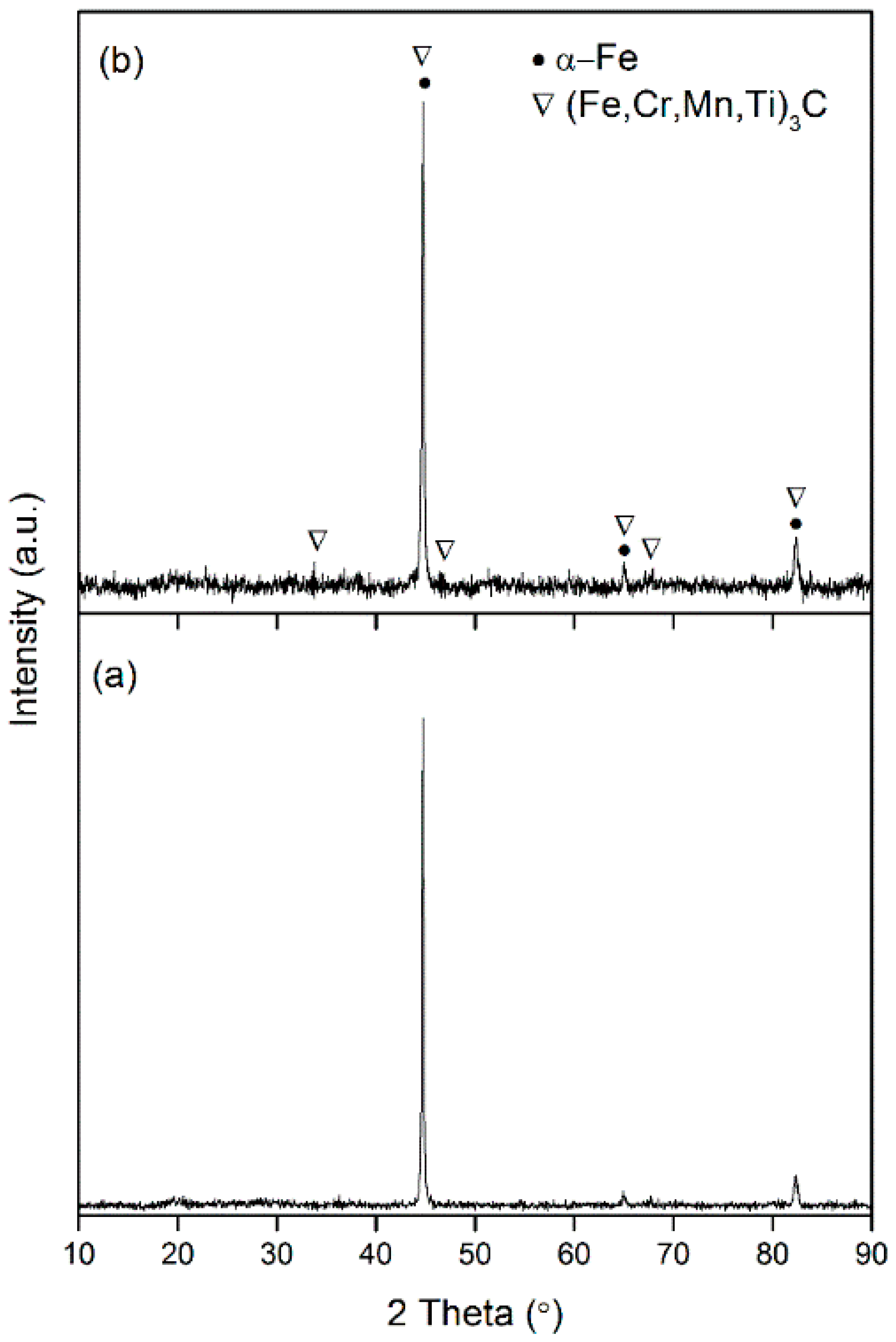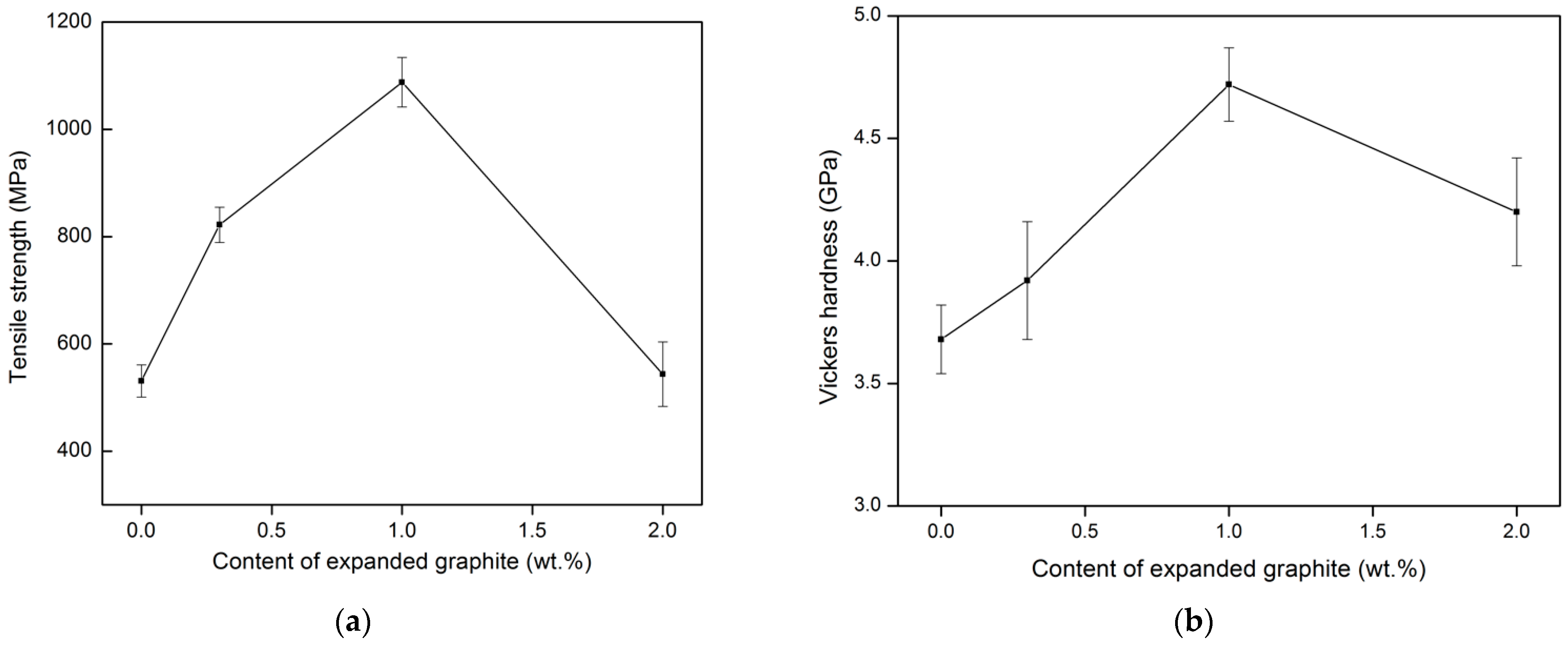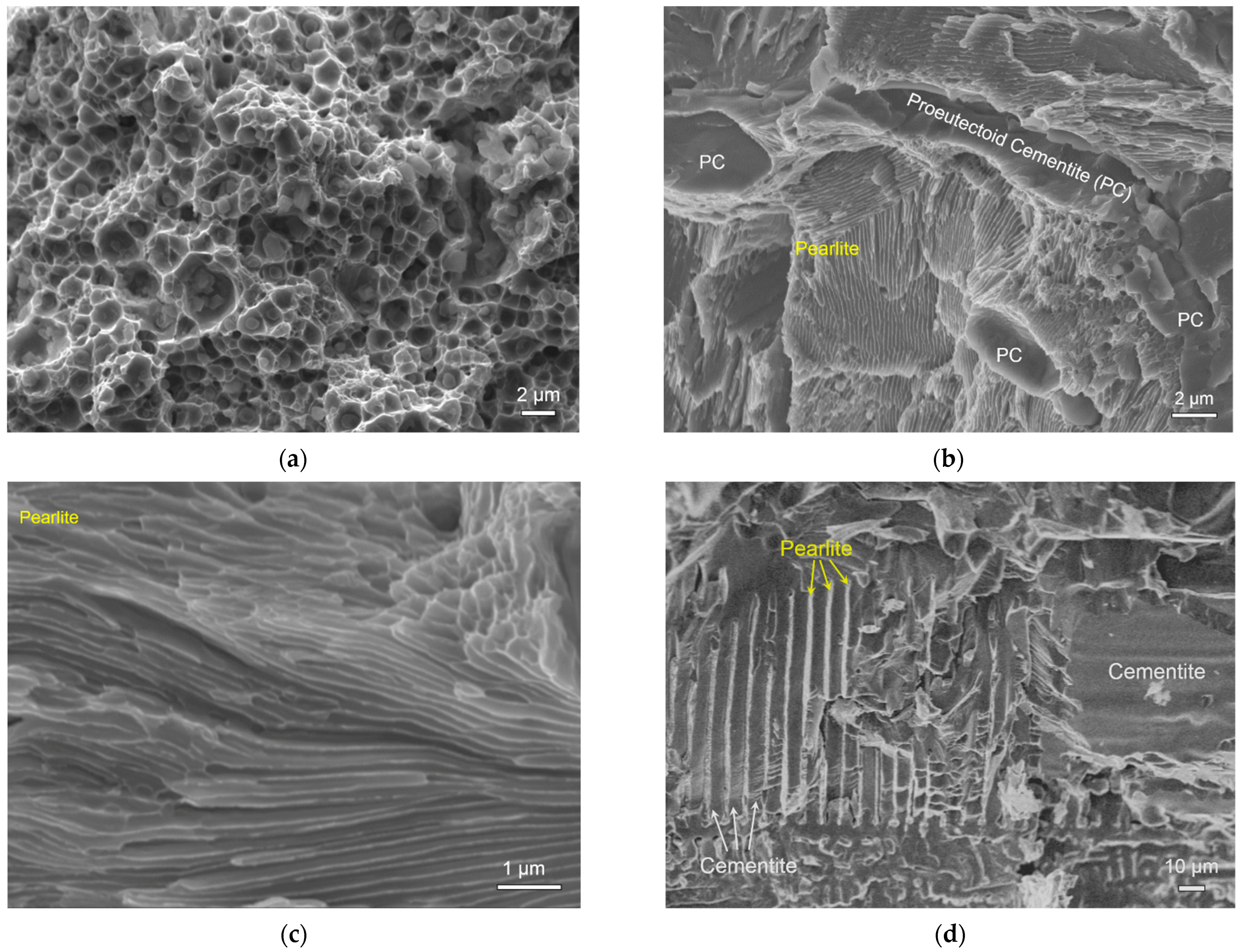Improvement of Mechanical Properties of 20CrMnTi Steel through Microstructure Modification
Abstract
:1. Introduction
2. Materials and Methods
2.1. Material Preparation
2.2. Property Measurement
2.3. Characterization
3. Results
4. Discussions
5. Conclusions
Author Contributions
Funding
Institutional Review Board Statement
Informed Consent Statement
Data Availability Statement
Conflicts of Interest
References
- Kong, W.; Zhang, D.; Tao, Q.; Chen, K.; Wang, J.; Wang, S. Wear properties of the deep gradient wear-resistant layer applied to 20CrMnTi gear steel. Wear 2019, 424–425, 216–222. [Google Scholar] [CrossRef]
- Li, X.; Xu, J. Coordinating influence of multilayer graphene and spherical SnAgCu for improving tribological properties of a 20CrMnTi material. RSC Adv. 2018, 8, 14129–14137. [Google Scholar] [CrossRef] [PubMed] [Green Version]
- Yang, Q.; Ren, X.; Gao, Y.; Li, Y.; Zhao, Y.; Yao, M. Effect of carburization on residual stress field of 20CrMnTi sample and its numerical simulation. Mater. Sci. Eng. A 2005, 392, 240–247. [Google Scholar] [CrossRef]
- Ryzhov, N.M.; Fakhurtdinov, R.S.; Smirnov, A.E.; Fomina, L.P. Analysis of methods of carburizing of gears from heat-resistant steels. Metal. Sci. Heat Treat. 2010, 52, 260–265. [Google Scholar] [CrossRef]
- Lv, Y.; Lei, L.; Sun, L. Effect of shot peening on the fatigue resistance of laser surface melted 20CrMnTi steel gear. Mater. Sci. Eng. A 2015, 629, 8–15. [Google Scholar] [CrossRef]
- Zhang, P.; Zhang, F.C.; Yan, Z.G.; Wang, T.S.; Qian, L.H. Wear property of low-temperature bainite in the surface layer of a carburized low carbon steel. Wear 2011, 271, 697–704. [Google Scholar] [CrossRef]
- Xu, J.; Li, X.; Lu, J.; Zhu, J. An investigation into mechanics and tribology of SnAgCu and MoO3 containing in 20CrMnTi based composites. J. Alloys Compd. 2020, 831, 154858. [Google Scholar] [CrossRef]
- Zhou, S.F.; Dai, X.Q.; Zheng, H.Z. Microstructure and wear resistance of Fe-based WC coating by multi-track overlapping laser induction hybrid rapid cladding. Opt. Laser Technol. 2012, 44, 190–197. [Google Scholar] [CrossRef]
- Yang, K.; Shi, X.L.; Huang, Y.C.; Wang, Z.H. The research on the sliding friction and wear behaviors of 20CrMnTi-10 wt% Ag at elevated temperatures. Mater. Chem. Phys. 2017, 186, 317–326. [Google Scholar] [CrossRef]
- Shi, Y.; Li, Y.; Liu, J.; Yuan, Z. Investigation on the parameter optimization and performance of laser cladding a gradient composite coating by a mixed powder of Co50 and Ni/WC on 20CrMnTi low carbon alloy steel. Opt. Laser Technol. 2018, 99, 256–270. [Google Scholar] [CrossRef]
- Yan, M.F.; Liu, Z.R. Study on microstructure and microhardness in surface layer of 20CrMnTi steel carburised at 880 °C with and without RE. Mater. Chem. Phys. 2001, 72, 97–100. [Google Scholar] [CrossRef]
- Zheng, C.; Li, L.; Yang, W.; Sun, Z. Relationship between microstructure and yield strength for plain carbon steel with ultrafine or fine (ferrite + cementite) structure. Mater. Sci. Eng. A 2014, 617, 31–38. [Google Scholar] [CrossRef]
- Jiang, M.; Liu, C.; Chen, Z.; Wang, P.; Liao, H.; Zhao, D.; Liu, Z.; Wang, X.; Xu, M.; Lao, C. Enhanced strength-ductility synergy of selective laser melted reduced activation ferritic/martensitic steel via heterogeneous microstructure modification. Mater. Sci. Eng. A 2021, 801, 140424. [Google Scholar] [CrossRef]
- Mithun, C.M.; Sellamuthu, R.; Saravanan, R. Effect of surface modification on microstructure, hardness and wear rate of steels with 0.2%, 0.4% and 1.1 wt%C by the addition of titanium using gas tungsten arc. Mater. Today Proc. 2018, 5, 7586–7594. [Google Scholar] [CrossRef]
- Liu, K.P.; Dun, X.L.; Lai, J.P.; Liu, H.S. Effects of modification on microstructure and properties of ultrahigh carbon (1.9 wt% C) steel. Mater. Sci. Eng. A 2011, 528, 8263–8268. [Google Scholar] [CrossRef]
- Xu, F.; Guo, G.; Tang, G.; Ma, X.; Wang, L.; Ozur, G.E.; Yukimura, K. Microstructure modifications and corrosion behaviors of Cr4Mo4V steel treated by high current pulsed electron beam. Mater. Chem. Phys. 2011, 126, 904–908. [Google Scholar] [CrossRef]
- Suryanarayana, C. Mechanical alloying and milling. Prog. Mater. Sci. 2001, 46, 1–184. [Google Scholar] [CrossRef]
- Li, S.B.; Xie, J.X.; Zhao, Z.Y. Fabrication of W-Cu ultrafine powders by mechanical alloying. Mater. Sci. Technol. 2004, 20, 1345–1350. [Google Scholar] [CrossRef]
- Li, S.B.; Xie, J.X. Processing and sintering of W/Cu graded material fabricated by multi-billet extrusion using mechanical alloyed powders. Compos. Sci. Technol. 2006, 66, 2329–2336. [Google Scholar] [CrossRef]
- Jiang, J.; Li, S.; Hu, S.; Zhou, Y. Effects of in situ formed TiCx on the microstructure, mechanical properties and abrasive wear behavior of a high chromium white iron. Mater. Chem. Phys. 2018, 214, 80–88. [Google Scholar] [CrossRef]
- Zhao, M.; Chen, Q. Parameters optimization of low carbon low alloy steel annealing process. Acta Metall. Sin. 2013, 26, 122–130. [Google Scholar] [CrossRef] [Green Version]





Publisher’s Note: MDPI stays neutral with regard to jurisdictional claims in published maps and institutional affiliations. |
© 2022 by the authors. Licensee MDPI, Basel, Switzerland. This article is an open access article distributed under the terms and conditions of the Creative Commons Attribution (CC BY) license (https://creativecommons.org/licenses/by/4.0/).
Share and Cite
Men, Z.; Li, S.; Lu, X.; Chen, Y. Improvement of Mechanical Properties of 20CrMnTi Steel through Microstructure Modification. Coatings 2022, 12, 662. https://doi.org/10.3390/coatings12050662
Men Z, Li S, Lu X, Chen Y. Improvement of Mechanical Properties of 20CrMnTi Steel through Microstructure Modification. Coatings. 2022; 12(5):662. https://doi.org/10.3390/coatings12050662
Chicago/Turabian StyleMen, Zhongwen, Shibo Li, Xiaogang Lu, and Yunbo Chen. 2022. "Improvement of Mechanical Properties of 20CrMnTi Steel through Microstructure Modification" Coatings 12, no. 5: 662. https://doi.org/10.3390/coatings12050662
APA StyleMen, Z., Li, S., Lu, X., & Chen, Y. (2022). Improvement of Mechanical Properties of 20CrMnTi Steel through Microstructure Modification. Coatings, 12(5), 662. https://doi.org/10.3390/coatings12050662





